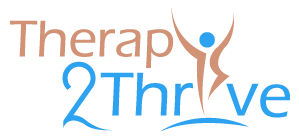
Youth violence in our nation is staggering. Its range is far reaching from violence committed by a child or committed against a child, and can include child abuse, rape, murder and nonfatal assault. In school, bullying also is considered youth violence.
For someone who has worked in schools for almost 20 years, and reads statistics of youth violence, I ask myself: How do we prevent violence in the lives of our children? How do we support children and teach them skills in empathy, perspective taking and compassion? Many schools are embracing social and emotional curriculum and standards that promote emotional intelligence and inclusive practices, and even provide small group intervention in social skills training to build students’ capacity in connection and problem solving. While I take part in teaching and modeling these skills to students, I want to reach further and identify some protective factors from youth violence and share with the larger community.
Protective factors empower students, parents and communities to take action and move from feeling helpless to feeling effective and part of a solution. These are meaningful and critical actions that we, and our children, do to prevent youth violence. Some protective factors include:
- A sense of connection to family, and other trusted adults
- Open communication in families about topics that are uncomfortable. Many parents want to shield their children from difficult topics. While well intentioned, young children often create their own narrative about what is going on around them, which is often misleading and/or inaccurate. Talking to children gives parents an opportunity to build connection, understand their child’s personal view, validate their thoughts, feelings and experiences, and educate their children around misinformation
- Create an atmosphere of trust – parents listen to children in times of personal sharing and invite questions
- Parents mindfully use personal sharing time as a “teachable moment”
- Reasonable expectations for school performance with a focus on effort and the process of learning rather than the result or product
- Family time and shared activities with parents
- Consistency and presence – at least one parent being available when children wake up in the morning, come home from school, during mealtimes and when going to bed.
There are other means children themselves take action against youth violence. Recently, we have seen advocacy and leadership among youth who are paving the way for change. These youth are speaking out and demanding action from lawmakers, inspiring our nation, and each other, toward movement and social change. At the school site where I work part-time as a school psychologist in Oakland, students are organizing a walk-out on March 14th to honor those students who lost their lives to gun violence in Parkland, Florida. Their action is bringing the community together with a shared goal to prevent gun violence in the future. We can follow their lead and engage with our youth at an early age through modeling, recognizing and celebrating those who speak out. We can also protect our youth by talking with them about difficult issues, at their developmental level, and focus our conversations on prevention and solutions. Moving into action propels us forward, which is how change occurs.
By Jennifer Porter, M.A., Ed, AMFT Associate Counselor at Therapy2Thrive counseling center in Pleasanton

